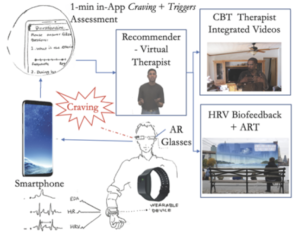EMPOWER Safety Dashboard
Sponsor: National Academies of Sciences, Engineering, and Medicine
 Sustaining a healthy personal and process safety culture is critical to the well-being and integrity of all organizations especially high-reliability organizations like offshore installations. Traditionally, safety culture is measured with a lengthy employee survey on an annual basis. Survey methodology is fraught with limitations including low response rates, social desirability concerns, the considerable time required to summarize and interpret the survey data, and failure to capture meaningful changes between surveys. Further, survey data do not lend themselves to quick interpretation through visualization and action. Our interdisciplinary team composed of organizational and human factors safety researchers and offshore subject matter experts proposes to address these limitations by developing a novel assessment of safety culture and pairing these data with readiness data in a format that is easy for supervisors to view and act upon. The purpose of the proposed research project is twofold: (1) to develop and test novel measurement tools to capture safety culture and worker readiness using field-friendly methodologies, including experience sampling methodology and wearable devices, and (2) to design, develop, and evaluate the value of a dashboard of worker data called EMPOWER (Evaluate, Measure, Promote Offshore Worker Engagement and Readiness). This dashboard will visually display worker psychological (safety culture) and physiological (lack of fatigue or readiness) data on an interactive user-centered-designed interface so that supervisors can easily access it on a daily basis to support organizational decision-making. The research team will evaluate the extent to which offshore installation supervisors and workers value and anticipate using such previously unavailable safety culture and worker readiness data in real-time, as well as its impact on hypothetical offshore scenario-based decision making.
Sustaining a healthy personal and process safety culture is critical to the well-being and integrity of all organizations especially high-reliability organizations like offshore installations. Traditionally, safety culture is measured with a lengthy employee survey on an annual basis. Survey methodology is fraught with limitations including low response rates, social desirability concerns, the considerable time required to summarize and interpret the survey data, and failure to capture meaningful changes between surveys. Further, survey data do not lend themselves to quick interpretation through visualization and action. Our interdisciplinary team composed of organizational and human factors safety researchers and offshore subject matter experts proposes to address these limitations by developing a novel assessment of safety culture and pairing these data with readiness data in a format that is easy for supervisors to view and act upon. The purpose of the proposed research project is twofold: (1) to develop and test novel measurement tools to capture safety culture and worker readiness using field-friendly methodologies, including experience sampling methodology and wearable devices, and (2) to design, develop, and evaluate the value of a dashboard of worker data called EMPOWER (Evaluate, Measure, Promote Offshore Worker Engagement and Readiness). This dashboard will visually display worker psychological (safety culture) and physiological (lack of fatigue or readiness) data on an interactive user-centered-designed interface so that supervisors can easily access it on a daily basis to support organizational decision-making. The research team will evaluate the extent to which offshore installation supervisors and workers value and anticipate using such previously unavailable safety culture and worker readiness data in real-time, as well as its impact on hypothetical offshore scenario-based decision making.
Collaborators: TAMU (Payne, Sasangohar)
FRAME (Fatigue Risk Assessment and Management in high-risk Environments)
Sponsor: Ocean Energy Safety Institute, National Academies of Sciences, Engineering, and Medicine
 The oil and gas extraction (OGE) industry continues to experience a fatality rate nearly seven times higher than that for all U.S. workers. OGE workers are exposed to intensive shift patterns and long work durations inherent in this environment. This leads to fatigue, thereby increasing the risks of accidents and injuries. Fatigue is a physiological state of reduced mental or physical performance capability resulting from sleep loss, circadian phase, and/or workload. It has been implicated as a critical risk in OGE operations and was identified as a causal risk factor in two major incidents – the BP Texas City Refinery Explosion and the Macondo Well Explosion and Fire. However, systematic studies to identify, assess, and manage fatigue-related risks in OGE operations are limited. Effective fatigue assessment methods must be developed to address the elevated fatality rate in the OGE onshore and offshore industries. The objectives of the proposed work are to develop a reliable fatigue survey and a personalized fatigue prediction tool, using innovative machine learning algorithms, that employ the survey responses, worker characteristics, and planned workload/schedules.
The oil and gas extraction (OGE) industry continues to experience a fatality rate nearly seven times higher than that for all U.S. workers. OGE workers are exposed to intensive shift patterns and long work durations inherent in this environment. This leads to fatigue, thereby increasing the risks of accidents and injuries. Fatigue is a physiological state of reduced mental or physical performance capability resulting from sleep loss, circadian phase, and/or workload. It has been implicated as a critical risk in OGE operations and was identified as a causal risk factor in two major incidents – the BP Texas City Refinery Explosion and the Macondo Well Explosion and Fire. However, systematic studies to identify, assess, and manage fatigue-related risks in OGE operations are limited. Effective fatigue assessment methods must be developed to address the elevated fatality rate in the OGE onshore and offshore industries. The objectives of the proposed work are to develop a reliable fatigue survey and a personalized fatigue prediction tool, using innovative machine learning algorithms, that employ the survey responses, worker characteristics, and planned workload/schedules.
Collaborators: TAMU (Peres)
To access the Fatigue Risk Assessment and Management in high-risk Environments (FRAME) survey, please click here: FRAME survey
iPAL: intelligent Pervasive Augmented reaLity therapies
Sponsor: NSF Smart & Connected Health
 Opioid use disorder and addiction are now characterized as a nationwide “opioid epidemic,” with overdoses now the leading cause of injury deaths in the United States. While opioid overdose deaths have increased greatly over the past two decades as compared to other chronic diseases (e.g., heart disease) the development of remote monitoring and management tools and techniques for opioid cravings, recovery, and relapse have not kept pace. This project will develop intelligent Pervasive Augmented reaLity therapies (iPAL) – a technology-enabled OUD intervention that aims to help OUD sufferers manage their cravings to reduce their risk for relapse or overdose. iPAL integrates complementary psychotherapies (cognitive behavioral therapy and heart rate variability biofeedback) with immersive technologies (augmented and mixed reality) that will offer convenience, discretion in use, in the moment/real-time through personalized strategies. This work is poised to revolutionize how individuals learn, discover, create, and heal in the broader context of developing treatment strategies for those with OUD.
Opioid use disorder and addiction are now characterized as a nationwide “opioid epidemic,” with overdoses now the leading cause of injury deaths in the United States. While opioid overdose deaths have increased greatly over the past two decades as compared to other chronic diseases (e.g., heart disease) the development of remote monitoring and management tools and techniques for opioid cravings, recovery, and relapse have not kept pace. This project will develop intelligent Pervasive Augmented reaLity therapies (iPAL) – a technology-enabled OUD intervention that aims to help OUD sufferers manage their cravings to reduce their risk for relapse or overdose. iPAL integrates complementary psychotherapies (cognitive behavioral therapy and heart rate variability biofeedback) with immersive technologies (augmented and mixed reality) that will offer convenience, discretion in use, in the moment/real-time through personalized strategies. This work is poised to revolutionize how individuals learn, discover, create, and heal in the broader context of developing treatment strategies for those with OUD.
Collaborators: Montana State, Clemson, Prisma Health
Smart, Secure, Non-invasive Wearable System for Proactive Detection of Hypoglycemic Events
Sponsors: Qatar Foundation, TEES
 Existing solutions for glucose monitoring such as continuous glucose monitors (CGMs) are invasive, costly, and reactive. Self-monitored glucose approaches are intermittent and miss hypoglycemic events, especially at night. Also, a significant portion of the type 2diabetes patients currently do not use CGM and thus cannot monitor for hypoglycemic events. We propose to develop a wearable, non-invasive, reliable, inexpensive, and proactive device to detect and prevent hypoglycemic events by detecting early onsets of hypoglycemic tremors. The innovation of our approach is to develop a machine-learning-based pattern detection algorithm to explicitly detect and characterize the frequency and amplitude of tremors. Predictive algorithms will be developed for personalized hypoglycemia event risk characterization based on the detected tremors, activity monitoring, and baseline characterization. Finally, the system will provide feedback to the patient using (1) vibration in the haptic wearable sensor system, and (2) smartphone-based auditory and vibrotactile alerts and store/relay hypoglycemic event data to healthcare providers.
Existing solutions for glucose monitoring such as continuous glucose monitors (CGMs) are invasive, costly, and reactive. Self-monitored glucose approaches are intermittent and miss hypoglycemic events, especially at night. Also, a significant portion of the type 2diabetes patients currently do not use CGM and thus cannot monitor for hypoglycemic events. We propose to develop a wearable, non-invasive, reliable, inexpensive, and proactive device to detect and prevent hypoglycemic events by detecting early onsets of hypoglycemic tremors. The innovation of our approach is to develop a machine-learning-based pattern detection algorithm to explicitly detect and characterize the frequency and amplitude of tremors. Predictive algorithms will be developed for personalized hypoglycemia event risk characterization based on the detected tremors, activity monitoring, and baseline characterization. Finally, the system will provide feedback to the patient using (1) vibration in the haptic wearable sensor system, and (2) smartphone-based auditory and vibrotactile alerts and store/relay hypoglycemic event data to healthcare providers.
Collaborators: TAMU-Q (Qarake), TAMU (Sasangohar, Lawley, Erraguntla)
SOS (Smart Opiate-Withdrawal Symptoms) System
Sponsors: TAMU Triads for Transformation
 Our multi-disciplinary and collaborative proposal aims to develop Smart Opiate-withdrawal Symptoms (SOS) Technology, which is non-invasive, reliable, and proactive, to detect and manage opiate withdrawal symptoms. Existing commercially-available off-the-shelf (COTS) sensors will be employed to detect temporal patterns of physiological and psychological responses associated with short- and long-term opiate withdrawal symptoms (e.g., sweating, heart rate changes, anxiety, muscle cramps, tremors, etc.). The innovation of our approach is to develop machine learning-based pattern detection algorithms to explicitly detect and characterize specific features obtained from the COTS sensor configuration (e.g., sleep quality, heart rate change, tremors) and existing contextual information (e.g., medication use and compliance, age, gender, etc.). Predictive algorithm results will be compared to existing methods of detecting opioid withdrawal episodes (e.g., survey assessment). Finally, the system will explore feedback modalities to different stakeholders: (1) to the patient using vibration in the haptic wearable sensor system or auditory-, haptic- or text-based alerts in smartphones; (2) real-time feedback to healthcare providers to facilitate interventions; and (3) text-based alerts to support groups for social support strengthening.
Our multi-disciplinary and collaborative proposal aims to develop Smart Opiate-withdrawal Symptoms (SOS) Technology, which is non-invasive, reliable, and proactive, to detect and manage opiate withdrawal symptoms. Existing commercially-available off-the-shelf (COTS) sensors will be employed to detect temporal patterns of physiological and psychological responses associated with short- and long-term opiate withdrawal symptoms (e.g., sweating, heart rate changes, anxiety, muscle cramps, tremors, etc.). The innovation of our approach is to develop machine learning-based pattern detection algorithms to explicitly detect and characterize specific features obtained from the COTS sensor configuration (e.g., sleep quality, heart rate change, tremors) and existing contextual information (e.g., medication use and compliance, age, gender, etc.). Predictive algorithm results will be compared to existing methods of detecting opioid withdrawal episodes (e.g., survey assessment). Finally, the system will explore feedback modalities to different stakeholders: (1) to the patient using vibration in the haptic wearable sensor system or auditory-, haptic- or text-based alerts in smartphones; (2) real-time feedback to healthcare providers to facilitate interventions; and (3) text-based alerts to support groups for social support strengthening.
Collaborators: TAMU (Sasangohar, Erraguntla)
